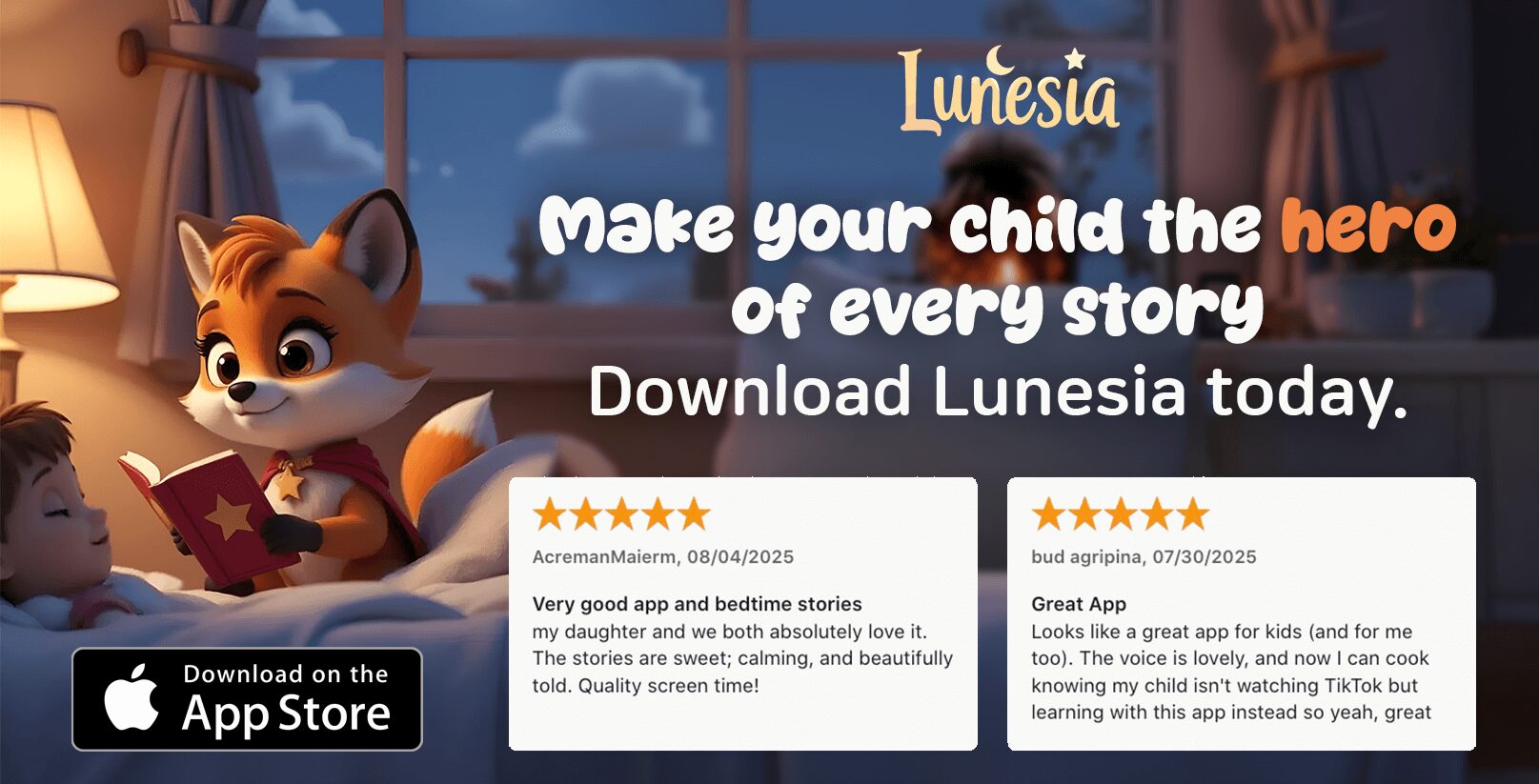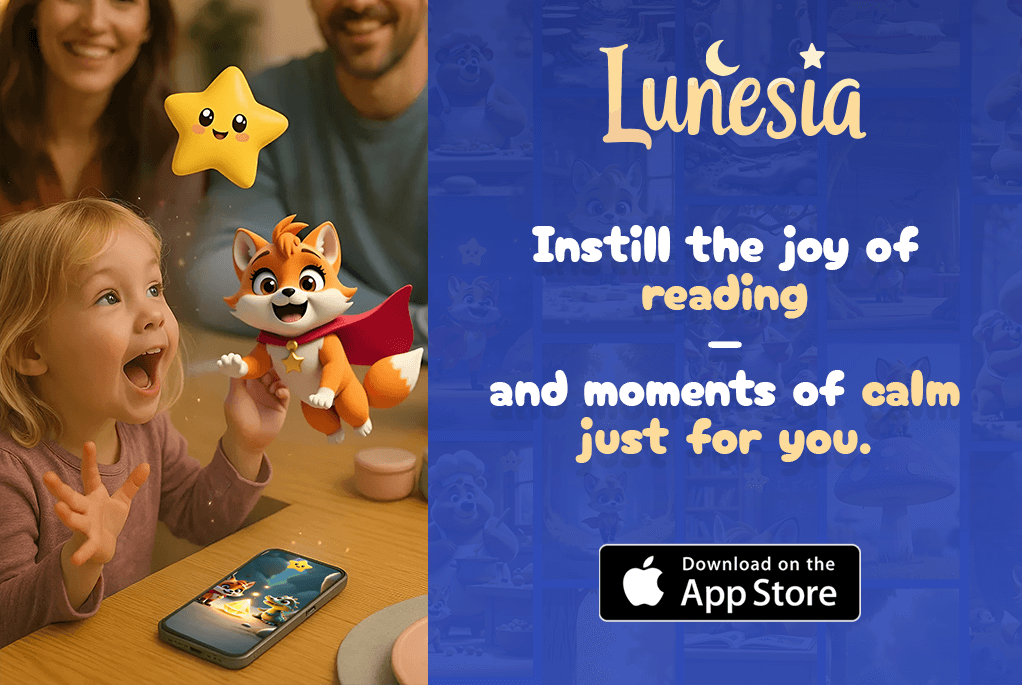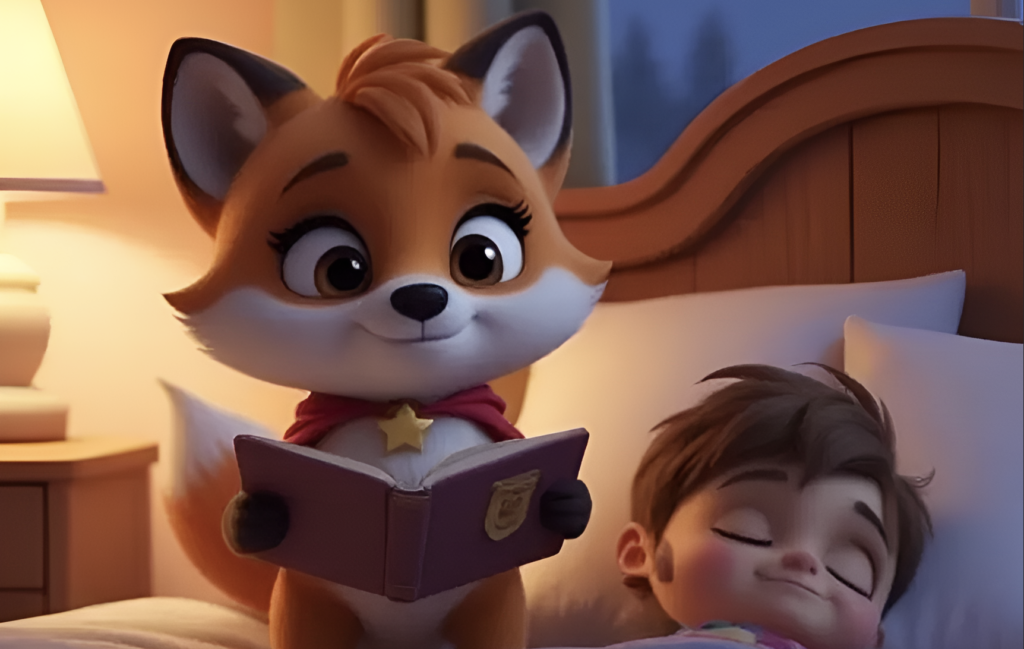As a parent, you want the best for your child, and storytelling can be a powerful tool in their development. Interactive children’s books are more than just stories; they’re dynamic experiences that engage young minds.
Unlike traditional books, interactive storytelling invites children to participate, fostering creativity and cognitive development. By engaging multiple senses, it creates a rich learning environment that encourages active participation.
This approach to storytelling has the potential to transform early childhood development across various domains. In this article, we’ll explore the top 10 benefits of interactive storytelling for your child’s growth.
Understanding Interactive Storytelling
Interactive storytelling is revolutionizing the way children engage with stories. As a parent or educator, you’re likely aware of the importance of storytelling in a child’s development. But what makes interactive storytelling so unique?
At its core, interactive storytelling involves more than just reading a story; it’s about creating an immersive experience that encourages participation and engagement. This is achieved through various elements such as touch-and-feel textures, flaps to lift, pop-ups, sound effects, and interactive prompts.
What Makes Storytelling “Interactive”
So, what truly makes storytelling “interactive”? It’s the incorporation of multisensory elements that engage preschoolers on multiple levels. Interactive stories often feature participatory prompts, allowing children to influence the storyline or make choices, thus promoting cognitive development and critical thinking skills. For instance, a story might ask a child to decide what happens next or to solve a simple puzzle to progress the narrative.
The Difference Between Traditional and Interactive Storytelling
The key difference between traditional and interactive storytelling lies in the level of engagement and the process of storytelling. Traditional storytelling is often a one-way delivery, where the storyteller reads or tells the story without much input from the child. In contrast, interactive storytelling creates a two-way communication process, empowering children to become co-creators of the narrative. You can explore more about the benefits of interactive storytelling for language growth through stories on Lunesia’s interactive storytelling platform.
How Interactive Storytelling Engages Preschoolers
By incorporating various interactive elements, storytelling for preschoolers becomes an immersive experience that fosters engagement and learning. This approach not only captures their attention but also encourages active participation, making the storytelling process more enjoyable and effective.
Multisensory Engagement Elements
Interactive storytelling engages preschoolers through a combination of multisensory elements, including tactile features, vibrant illustrations, and dynamic pop-up scenes. These engaging elements stimulate their senses, creating a richer experience that goes beyond traditional storytelling. For instance, tactile features allow children to touch and feel different textures, while visual elements like pop-up scenes capture their imagination.

Let’s examine how these elements work together to create an engaging experience for preschoolers.
| Element | Description | Benefit |
|---|---|---|
| Tactile Features | Textures and interactive parts | Stimulates sense of touch |
| Vibrant Illustrations | Colorful and engaging visuals | Captures visual attention |
| Pop-up Scenes | Dynamic 3D elements | Enhances visual imagination |
Active Participation vs. Passive Listening
One of the key benefits of interactive storytelling is that it encourages active participation rather than passive listening. By engaging with the story through interactive elements, children become an integral part of the narrative, enhancing their understanding and retention. This active engagement is crucial for preschooler development, as it fosters a deeper connection with the story and promotes a love for reading.
As we explore the benefits of interactive storytelling, it becomes clear that this approach not only engages children but also provides a foundation for future learning and development.
Top 10 Benefits of Interactive Storytelling for Preschoolers
Interactive storytelling is a powerful tool that offers numerous benefits for preschoolers, enhancing their development in various ways. As we explore the top 10 benefits, you’ll discover how this engaging approach can significantly impact your child’s growth.
Enhanced Language Development and Vocabulary Expansion
Interactive storytelling introduces children to new vocabulary in context, enhancing their language acquisition and communication skills. By engaging with stories, preschoolers learn to express themselves more effectively. Vocabulary expansion occurs naturally as children are exposed to a wide range of words and phrases.
Improved Listening and Comprehension Skills
The active listening required during interactive storytelling improves comprehension skills as children must follow along and respond appropriately. This engagement enhances their ability to understand and interpret information. Effective listening is a crucial skill that benefits many areas of a child’s development.
Boosted Memory Retention and Recall
The emotional connections formed during interactive storytelling strengthen memory retention and recall abilities in young children. By linking information to emotions and sensory experiences, stories help children remember details more effectively. Memory retention is improved through the narrative structure of stories.
Strengthened Emotional Intelligence and Empathy
Interactive stories help preschoolers develop emotional intelligence by experiencing different perspectives and emotions in a safe, guided environment. This exposure nurtures empathy and understanding towards others, crucial for social development.
Developed Critical Thinking and Problem-Solving Abilities
Stories of characters facing challenges inspire children to think critically and develop problem-solving skills. By predicting outcomes and considering character motivations, preschoolers enhance their critical thinking abilities.
Fostered Creativity and Imagination
Listening to stories sparks imagination, encouraging children to visualize characters, settings, and actions. Interactive storytelling fosters creativity by inviting children to contribute their own ideas to the narrative.
Enhanced Fine Motor Skills Through Interaction
Physical interactions with story elements, such as turning pages or manipulating puppets, naturally develop fine motor skills. This hands-on engagement is essential for motor skill development.
Improved Social Skills and Cooperation
Shared storytelling experiences improve social skills and cooperation as children learn to take turns, listen to others, and collaborate on story creation. This interactive process fosters a sense of community and cooperation.
Strengthened Parent-Child or Teacher-Child Bonds
Interactive storytelling provides a special bonding opportunity between children and their parents or teachers. This shared experience can strengthen relationships and create lasting memories. Bonding through storytelling is a valuable aspect of a child’s emotional development.
Increased Engagement and Interest in Reading
By making stories interactive, children become more engaged and interested in reading. This early exposure can foster a lifelong love of literature and learning. Engagement in reading is crucial for academic success.
| Benefit | Description | Impact |
|---|---|---|
| Enhanced Language Development | Introduces new vocabulary in context | Improves communication skills |
| Improved Listening Skills | Requires active listening and response | Enhances comprehension |
| Boosted Memory Retention | Links information to emotions and experiences | Improves recall abilities |
| Strengthened Emotional Intelligence | Exposes children to diverse perspectives and emotions | Nurtures empathy and understanding |
As we’ve explored the top 10 benefits of interactive storytelling for preschoolers, it’s clear that this approach offers a wide range of advantages. For more insights on how storytelling can impact creativity, visit https://lunesia.app/storytelling-and-creativity/.
Interactive Storytelling Techniques for Parents
Engaging your preschooler in interactive storytelling can be a game-changer for their development, and I’m here to guide you through the techniques. By making a few simple adjustments to your storytelling approach, you can create a more immersive and engaging experience for your child.
Using Voice Modulation and Facial Expressions
One of the most effective ways to bring stories to life is through voice modulation and facial expressions. Changing your tone, pace, and volume can make stories more captivating, while incorporating gestures and facial expressions adds emotion and clarity to the narrative. For instance, using a spooky voice for a villain or a soft, gentle tone for a kind character can make the story more engaging.
To take it a step further, consider pausing for effect. Strategic pauses can build suspense and keep your child engaged, wondering what will happen next. You can also use your facial expressions to convey emotions, making the story more relatable and interactive.
Incorporating Props and Puppets
Props and puppets can add an extra layer of engagement to your storytelling. They can help illustrate complex concepts and make the story more tangible for your child. When selecting props, choose items that complement the story without overwhelming your child. You can also create simple, homemade props that can be used across multiple stories, building a versatile storytelling toolkit.
| Prop Type | Story Example | Child Engagement |
|---|---|---|
| Puppets | Using a puppet to retell a story | Encourages role-playing and creativity |
| Costumes | Dressing up as a character | Enhances character understanding and empathy |
| Objects | Using a real object mentioned in the story | Makes the story more relatable and interactive |
Asking Open-Ended Questions During Stories
Asking open-ended questions during storytelling is a great way to stimulate your child’s critical thinking and maintain their engagement. Questions like “What do you think will happen next?” or “How do you think the character feels?” encourage your child to think deeply about the story and its characters. For more information on enhancing your child’s language skills through interactive methods, visit Lunesia’s language learning resources.
Timing is everything when asking questions. You want to ask them at moments that don’t disrupt the flow of the story but rather enhance it. This balance will keep your child engaged and interested in the narrative.

Interactive Storytelling Activities for Home
You can create a world of wonder for your child with simple interactive storytelling activities at home. By engaging your preschooler in these activities, you’re not only fostering a love for stories but also enhancing their creativity and imagination.
Creating DIY Personalized Storybooks
One of the most engaging interactive storytelling activities is creating DIY personalized storybooks. By featuring your child as the main character, you make the story more relatable and exciting. To start, gather materials like paper, glue, scissors, and markers. You can include your child’s favorite props or settings to make the story even more personal.
Story-Based Games and Role-Playing
Story-based games and role-playing are excellent ways to extend the storytelling experience. These activities encourage your child to use their imagination, develop problem-solving skills, and build confidence. By acting out their favorite stories, children can internalize the narratives and develop empathy.
Digital Interactive Storytelling Resources
In today’s digital age, there are numerous interactive storytelling resources available online, including apps and websites. These resources offer a range of engaging stories and experiences that can captivate your child’s attention. When choosing digital resources, look for those that promote creativity and imagination while maintaining educational value.
By incorporating these interactive storytelling activities into your daily routine, you can create a rich and engaging experience for your child. Whether through DIY storybooks, role-playing, or digital resources, the key is to make storytelling a fun and collaborative process.
Implementing Interactive Storytelling in Early Childhood Education
The power of interactive storytelling in early childhood education lies in its ability to captivate and educate young minds simultaneously. As educators, we’re constantly looking for innovative ways to engage our students and foster a love for learning. Interactive storytelling offers a dynamic approach to achieving these goals.
Effective classroom storytelling strategies are crucial for engaging groups of preschoolers with varying attention spans and interests. To create an inclusive environment, educators can incorporate diverse stories that reflect different cultures and abilities. For instance, partnering with local libraries, like Aspire Early Education does, can bring in a wide range of stories and storytelling experts.
Classroom Storytelling Strategies
To engage preschoolers, educators can use voice modulation and facial expressions to bring stories to life. Incorporating props and puppets can also enhance the storytelling experience, making it more interactive and enjoyable for young learners.
Integrating Stories Across the Curriculum
Stories can be used to reinforce concepts across various subject areas, including math, science, and social studies. For example, a story about a character’s journey can teach sequencing and geography. By integrating stories into the curriculum, educators can create cohesive learning experiences that connect different educational domains.
Group Storytelling Activities
Group storytelling activities promote collaboration, listening skills, and respect for others’ contributions. One effective method is to have children take turns adding to a story, either verbally or through drawings. This encourages creativity and teamwork.
| Storytelling Method | Learning Outcome | Example Activity |
|---|---|---|
| Interactive Reading | Enhanced Language Development | Reading a story together and asking open-ended questions |
| Puppet Shows | Improved Social Skills | Using puppets to retell a story and encouraging children to participate |
| Story Sequencing | Boosted Memory Retention | Having children sequence events from a story |
By implementing these strategies, educators can create a rich and engaging learning environment. For more interactive stories, you can explore resources like Lunesia’s interactive stories, which offer a variety of engaging narratives for young learners.
Overcoming Challenges in Interactive Storytelling
To fully harness the potential of interactive storytelling, we must first understand and tackle the challenges associated with it. As we engage children in this powerful educational tool, we encounter several obstacles that can impact its effectiveness.
Maintaining Attention and Engagement
One of the primary challenges is maintaining the attention and engagement of children, especially those with shorter attention spans. To address this, I recommend choosing simple stories that are tailored to their interests and keeping the narrative length manageable. Creating a comfortable and distraction-free environment also helps children stay focused. For instance, you can useprops and puppetsto make the storytelling experience more interactive and enjoyable.
Adapting Stories for Different Developmental Stages
Another challenge is adapting stories to suit different developmental stages. This involves simplifying complex narratives while retaining their essence and educational value. The following table illustrates how to adapt storytelling for various age groups:
| Age Group | Story Characteristics | Interaction Level |
|---|---|---|
| Toddlers (1-3 years) | Simple, colorful, and engaging stories | Basic interaction (e.g., pointing, naming objects) |
| Preschoolers (3-5 years) | Stories with simple plots and relatable characters | Moderate interaction (e.g., predicting outcomes, describing characters) |
By understanding these challenges and implementing strategies to overcome them, we can enhance the effectiveness of interactive storytelling for children.
Conclusion
The magic of interactive storytelling lies in its ability to captivate young learners while promoting essential skills and values.
By actively involving children in the storytelling process, we can unlock a world of learning opportunities that foster overall development. The benefits of this approach are multifaceted, ranging from improved language skills to enhanced creativity and emotional growth.
What’s more, interactive storytelling is accessible to all families, regardless of their resources or background. By starting small and gradually expanding their repertoire, parents and educators can harness the power of this approach to create a strong foundation for future academic success and lifelong learning.
As we conclude, it’s clear that storytelling is not just a engaging activity, but a powerful tool for shaping young minds and creating lasting connections between adults and children.
FAQ
How can I make storytelling more engaging for my child?
You can make storytelling more engaging by using voice modulation, facial expressions, and incorporating props or puppets. This helps bring the story to life and captures your child’s imagination.
What are some ways to encourage my child to participate in storytelling?
Encourage your child to participate by asking open-ended questions during the story, allowing them to predict what happens next, or having them act out parts of the story. This fosters active participation and develops their critical thinking skills.
Can interactive storytelling help with my child’s language development?
Yes, interactive storytelling exposes your child to a wide range of vocabulary and sentence structures, enhancing their language skills. It also encourages them to express their thoughts and feelings, further developing their communication abilities.
How does interactive storytelling impact my child’s emotional intelligence?
Interactive storytelling helps children understand and manage their emotions by relating to the characters’ experiences and feelings. This develops their emotional intelligence and empathy, crucial for building strong relationships.
Are there any digital resources available for interactive storytelling?
Yes, there are many digital interactive storytelling resources available, including apps, websites, and e-books that offer interactive stories. These can be a great way to engage your child, especially if they’re interested in technology.
How can I adapt interactive storytelling for children at different developmental stages?
To adapt interactive storytelling, consider the child’s age and abilities. For younger children, use simpler stories and more visual aids. For older children, you can use more complex stories and encourage more participation and discussion.
Can interactive storytelling be used in a classroom setting?
Absolutely, interactive storytelling is a valuable tool in early childhood education. Teachers can use it to engage students, promote learning across the curriculum, and develop various skills through group storytelling activities and other strategies.




